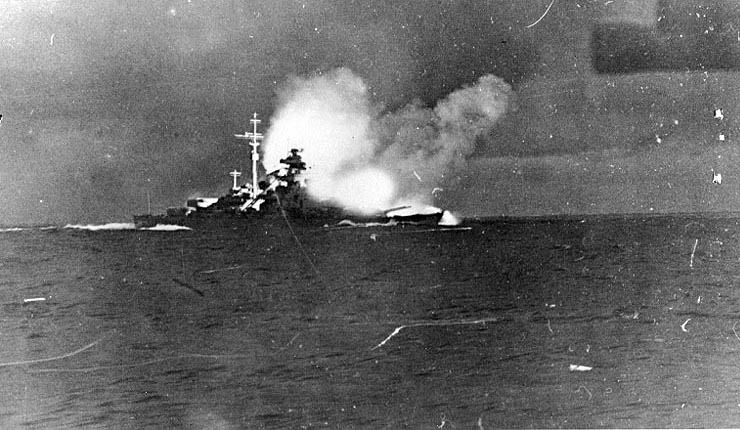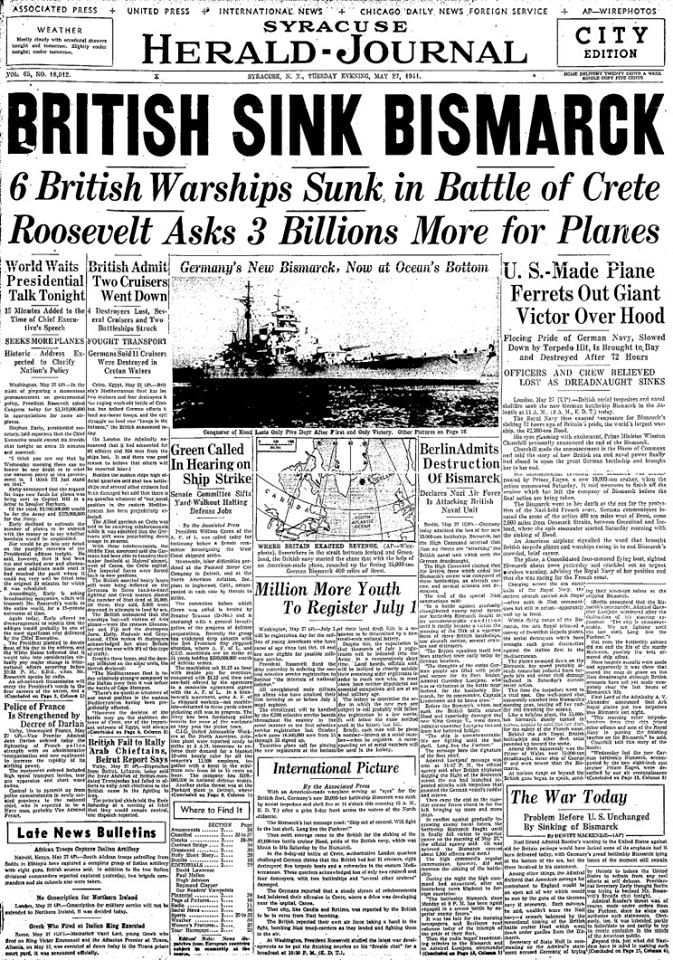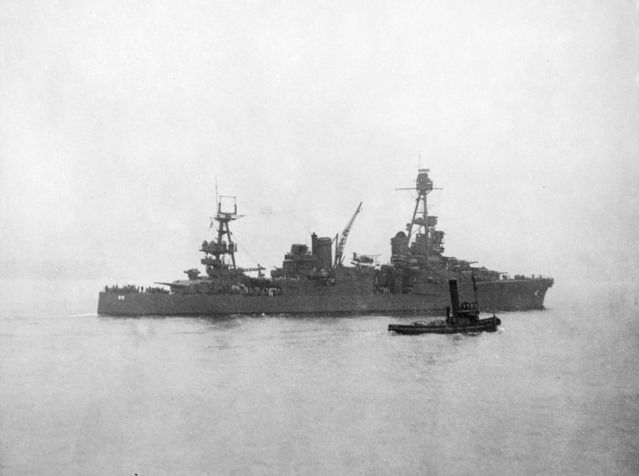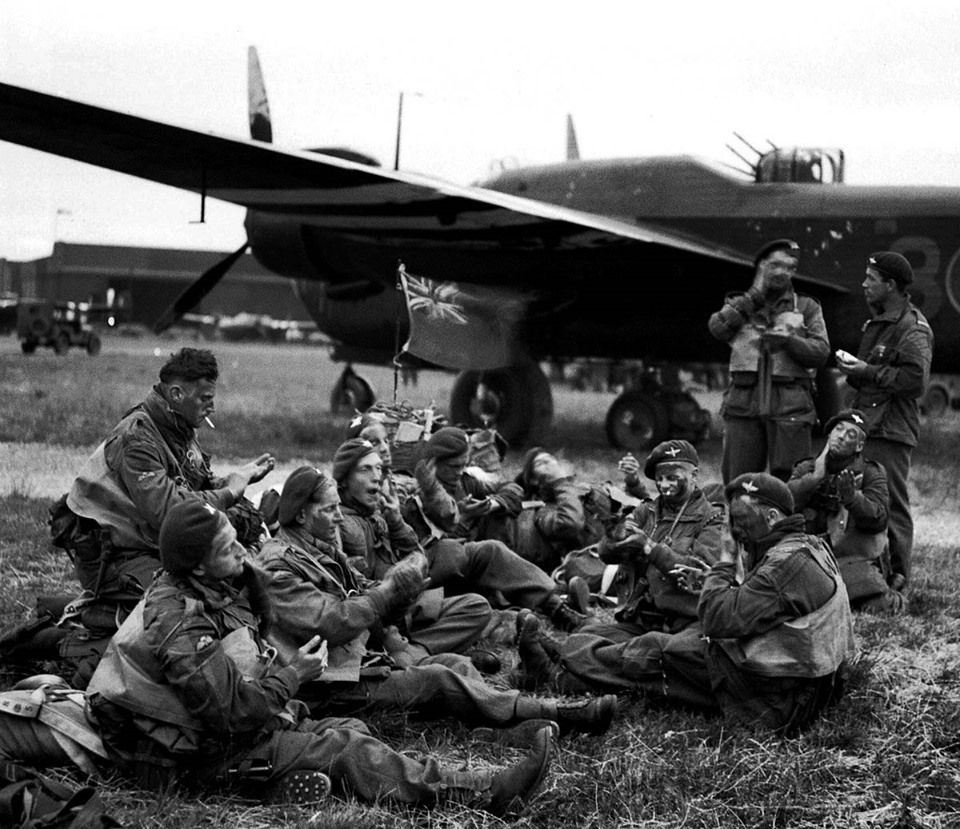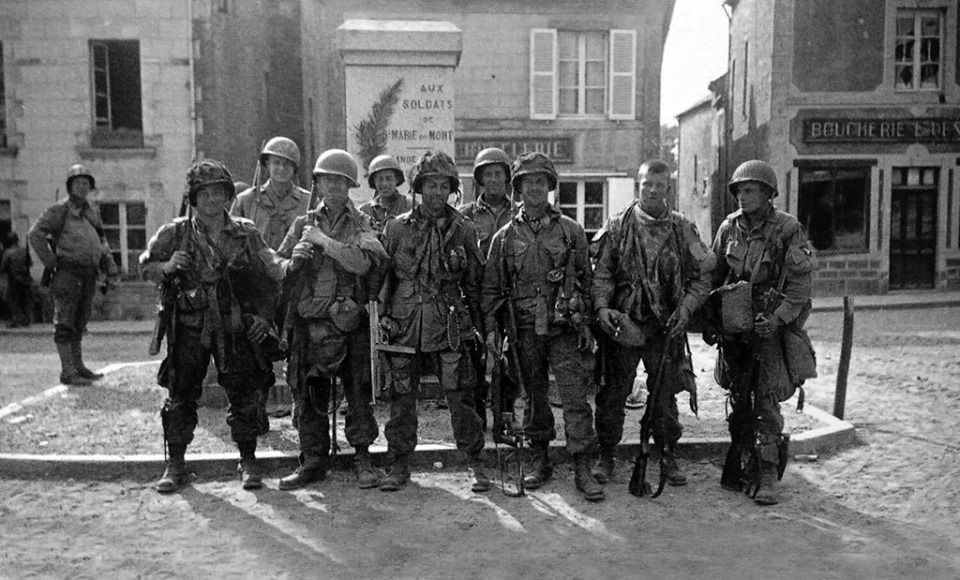May 24, 1941. Battle of Denmark Strait
At 0552 hours, British battlecruiser HMS Hood and battleship HMS Prince of Wales open fire on German battleship Bismarck and cruiser Prinz Eugen from 24 km. Although they outgun the Germans, both British ships have flaws. At 0600 hours, a 15 inch shell from Bismarck penetrates HMS Hood’s thin deck armour, exploding a magazine. Hood is blown in 2 and sinks quickly (1,415 killed, 3 survivors).
HMS Prince of Wales (completed only 2 months earlier) is hit 7 times (13 killed) and retires at 0604 hours with her new guns jammed. Bismarck is hit 3 times (no casualties) but flooding in her bows and a boiler room reduces speed to 28 knots. British cruisers HMS Suffolk and HMS Norfolk continue following Bismarck and Prinz Eugen but at 1800 hours Prinz Eugen escapes South in a squall. At 2350 hours, 8 Swordfish torpedo bombers from British aircraft carrier HMS Victorious attack Bismarck (1 torpedo hits with little damage, 1 killed).
Photo: Bismarck firing on Hood and Prince of Wales, Battle of Denmark Strait, 24 May 1941, photographed from Prinz Eugen.
Source: worldwar2daybyday
